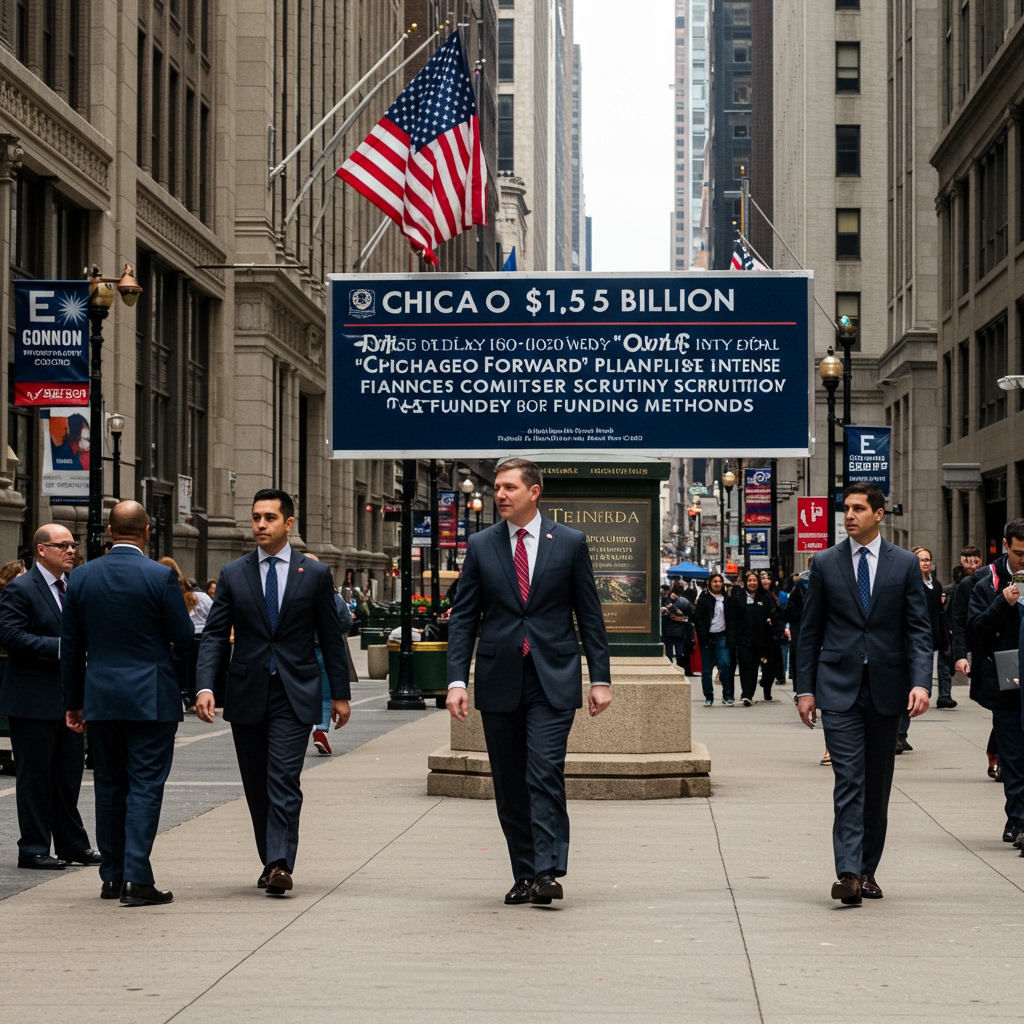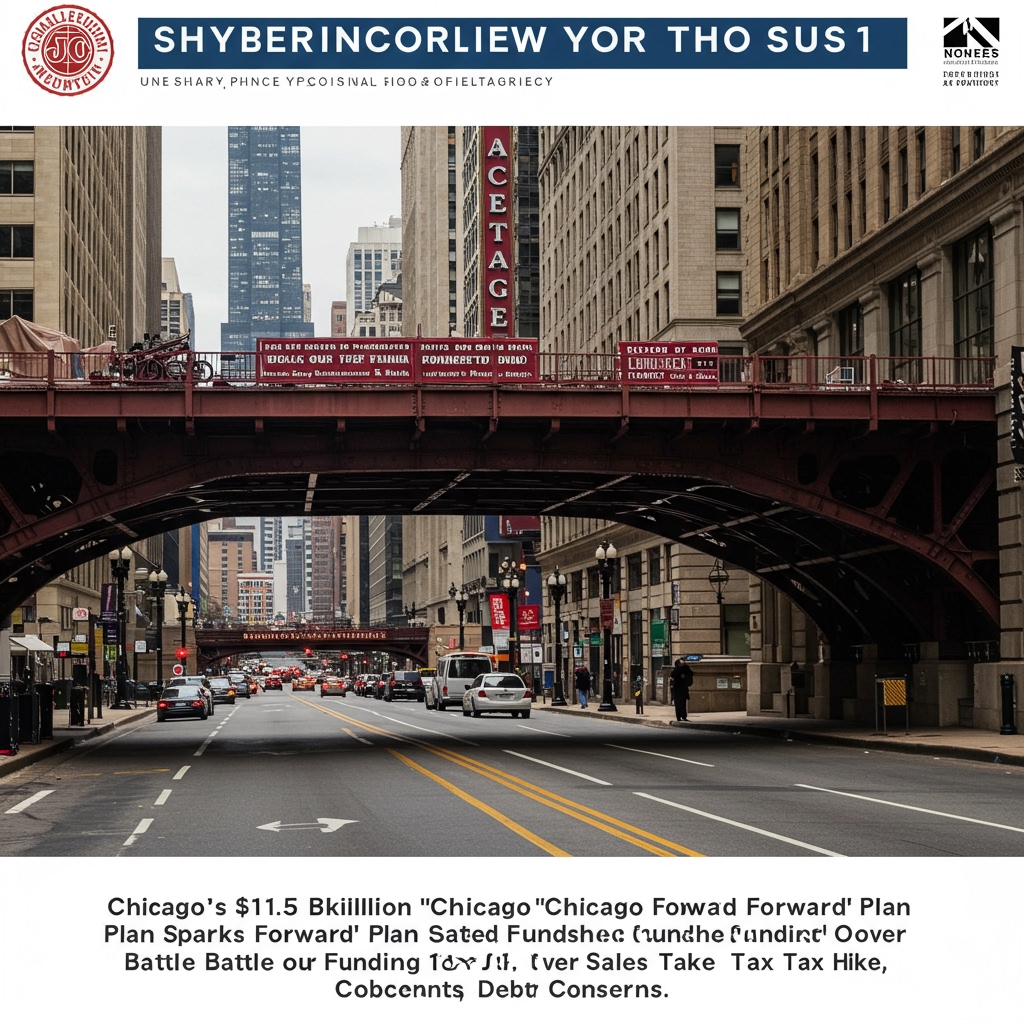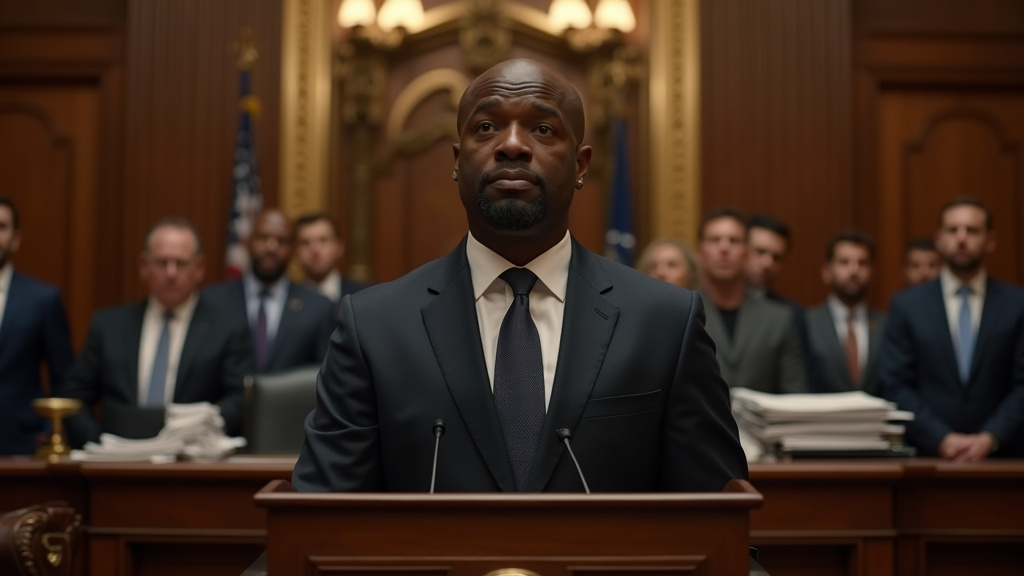Chicago Mayor Brandon Johnson’s administration unveiled its highly anticipated “Neighborhood Safety Initiative” on June 8th, a multi-year strategy designed to address the city’s complex challenges with violence through a focus on prevention and community investment. The plan, positioned as a significant shift in the city’s approach to public safety, immediately became a focal point for discussion and analysis across Chicago’s diverse media landscape. On June 9th, the city’s major editorial boards published their reactions, offering a complex and often critical assessment of the proposed framework. While acknowledging the strategic emphasis on proactive measures and investing in community-based solutions, a dominant theme emerged across these publications: significant and persistent questions surrounding the long-term sustainability and transparency of the plan’s funding.
The “Neighborhood Safety Initiative” was introduced with an initial commitment of $50 million in city funding. This foundational investment is intended to seed various violence prevention programs, expand mental health services, support youth initiatives, and bolster community infrastructure in areas most affected by violence. The stated goals are ambitious, aiming to tackle the root causes of crime by addressing systemic issues such as poverty, lack of opportunity, and trauma. Proponents of the plan argue that a sustained investment in these areas is crucial for creating lasting peace and reducing reliance solely on law enforcement responses.
However, the editorial response on June 9th highlighted a collective skepticism regarding the plan’s financial underpinnings beyond the initial $50 million. Editorials from prominent Chicago news outlets generally praised the intent behind the strategy – shifting focus towards prevention and community empowerment – but raised sharp inquiries about how this multi-year initiative would be funded in subsequent years. The initial $50 million, while substantial for a first-year commitment, was widely viewed as insufficient to sustain a comprehensive, citywide safety overhaul for the duration implied by a “multi-year strategy.”
Questions Mount Over Long-Term Funding and Transparency
A central point of contention articulated by the editorial boards was the perceived lack of concrete detail regarding the plan’s long-term financial model. Editorials called for greater transparency from Mayor Johnson’s administration on the expected total cost of the “Neighborhood Safety Initiative” over its projected lifespan and, crucially, the specific revenue streams or budgetary allocations that would support it past the initial $50 million. Concerns were raised that without a clear, sustainable funding pathway, the initiative could risk becoming another short-lived program, failing to deliver the sustained impact necessary to curb violence effectively.
One editorial, reflecting the sentiment of several others, noted that while the vision was commendable, a plan of this scope requires not just seed funding but a robust, multi-year budget clearly outlining how resources will be consistently directed to prevention efforts. The lack of this detail fueled fears that the initiative might falter due to insufficient resources down the line, undermining its potential effectiveness and eroding public trust.
Demands for Specificity and Accountability Metrics
Beyond funding, the editorials also voiced concerns about the specificity of the programs to be implemented under the “Neighborhood Safety Initiative” and the mechanisms for measuring its success. While the plan outlined broad areas of investment (violence prevention, youth services, mental health), editorial boards sought more granular detail on the specific types of programs, the organizations that would implement them, the target populations, and the expected outcomes.
Publications emphasized the need for measurable goals and clear accountability mechanisms. How would the city track progress? What metrics would be used to evaluate the effectiveness of the various programs? How would the public know if the $50 million (and subsequent potential funding) was being spent effectively and leading to tangible reductions in violence? These questions underscore a demand for data-driven evaluation and a commitment to transparency not just in funding, but in results.
There was also discussion regarding the potential impact of the initiative’s focus on police resource allocation. While the plan emphasizes prevention complementary to law enforcement, some editorials probed whether the shift in strategy might necessitate a reallocation or adjustment of police resources, and if so, how that would be managed without compromising immediate response capabilities. This reflected an ongoing debate in Chicago about the optimal balance between enforcement and prevention strategies in addressing crime.
Acknowledegments Amidst Skepticism
Despite the pointed criticisms, it is important to note that the editorial response was not entirely negative. Several publications explicitly acknowledged and often praised the Johnson administration’s stated commitment to addressing the root causes of violence, a departure from strategies focused predominantly on policing and incarceration. The emphasis on community-led solutions and investing in underserved neighborhoods resonated positively with some commentators, who viewed it as a necessary approach for long-term peace.
However, even these acknowledgements were frequently coupled with caveats about the execution. The vision was supported, but the pathway to achieving it, particularly from a financial and operational standpoint, was seen as lacking clarity and detail. The complex editorial landscape on June 9th thus reflected a city grappling with persistent violence and searching for effective solutions, while simultaneously demanding pragmatic, transparent, and sustainable plans from its leadership.
In summary, while Mayor Johnson’s “Neighborhood Safety Initiative,” announced on June 8th with an initial $50 million investment, was met with a willingness from Chicago’s editorial boards to acknowledge its focus on prevention and community, their reactions on June 9th were largely dominated by critical questions. The lack of a clear, sustainable long-term funding model beyond the initial city commitment was the most prominent concern, closely followed by demands for greater specificity on programmatic details, measurable goals, and accountability. The response highlights the significant pressure on the Johnson administration to provide more substance and transparency as it seeks to implement its new public safety strategy in a city desperately seeking effective and lasting peace.















